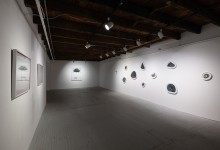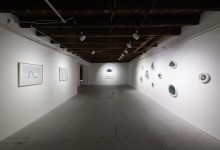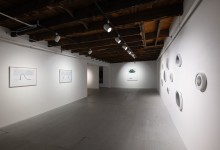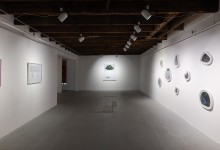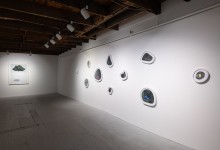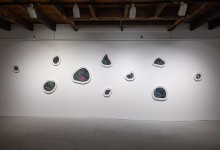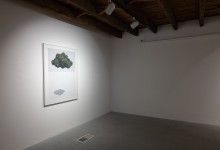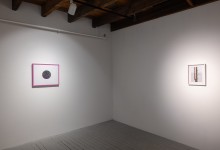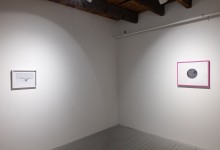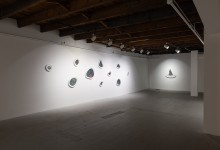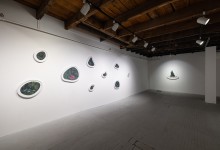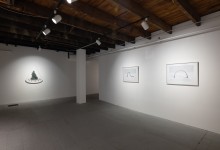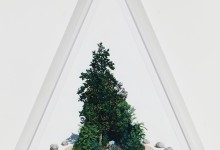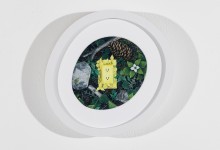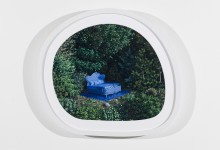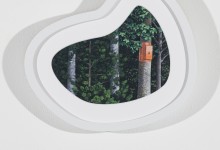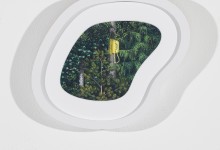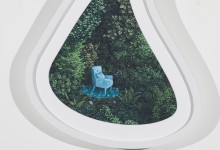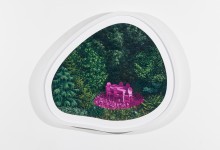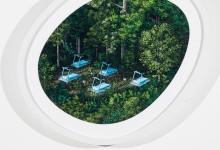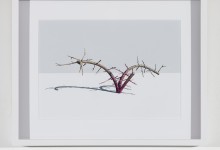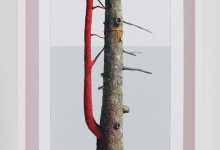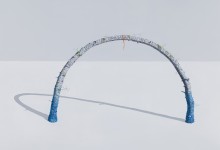Opening reception: Saturday, November 8, 2025 from 3 to 5 p.m.
Jazz Keillor: Landscape(d)
Text by Kara Eckler
For her first solo exhibition at Art Mûr, Nova Scotia-based emerging artist Jazz Keillor presents Landscape(d), a body of work which evokes as well as subverts the visual language of landscape painting. Keillor engages with conceptual ideas around our relationship to the earth, in the way that we exist in, manage, and control nature. Rather than painting a garden or traditional landscape vista, Keillor zooms in on dark, intimate forest nooks and groves and inserts enigmatic evidence of human intrusion. The objects she places in the forest glow with artificial, almost radioactive hues, further emphasizing the discordant and often harmful interruption of wildlife.
For centuries, Canada has been idealized for its vast, rugged nature, and the country’s museums are filled with Canadian landscape painting in the style of English Romanticism, genre painting depicting early colonial life, and Canadian icons of the early 20th century such as the Group of Seven and Emily Carr. The expansive, wild landscape looms large in the Canadian imagination. Keillor’s framed works, though organically shaped, give a sense of containment, of a clean structure that the wild must exist within. At first glance, almost appearing like botanical illustrations and certainly meticulous and refined, Keillor’s work is also as eerie as it is lovely. These could be dream images of the future, memories of nature that was. Their oneiric qualities are prominent, making us wonder if a zombie apocalypse has occurred, or if we have opened into a Lynchian alternate reality, and if so, where have all the actors gone?
Many Canadians venture to the cottage or the chalet on weekends and on holidays, while cities like Montreal boast at having among the most parks in the world, where many a city dweller whiles away the long summer days under the shade of trees. Suburban dads, like anywhere, obsess over having a yard big enough for the kids and the dog, and wage war on grass and hedges, mimicking the pristine green lawns originally intended to recall the highly groomed properties of the British wealthy. As humans, we are animals and thus part of nature, but our destructive tendencies towards our habitat are undeniable. We seek to contain, to shape, and to exploit the earth that birthed us. How long before all of nature is contained in tidy little enclosures, like in these paintings? Leaning close to view these small works on paper, framed in white shapes which resemble melting windows or portholes on a ship, we find traces of humanity. A cobalt blue claw foot tub tucked away in the dense and dark bush, Barbie pink ellipticals and baby blue treadmills lined up as if they’re in a gym, empty tables that could belong to a doll house, except life-sized. A tree grows on the cork base of a bell jar, surrounded by landscaping stones on an island where one ice-blue creature is the only inhabitant. These works carry an aura of climate anxiety as well as mystery and quiet reverence.


